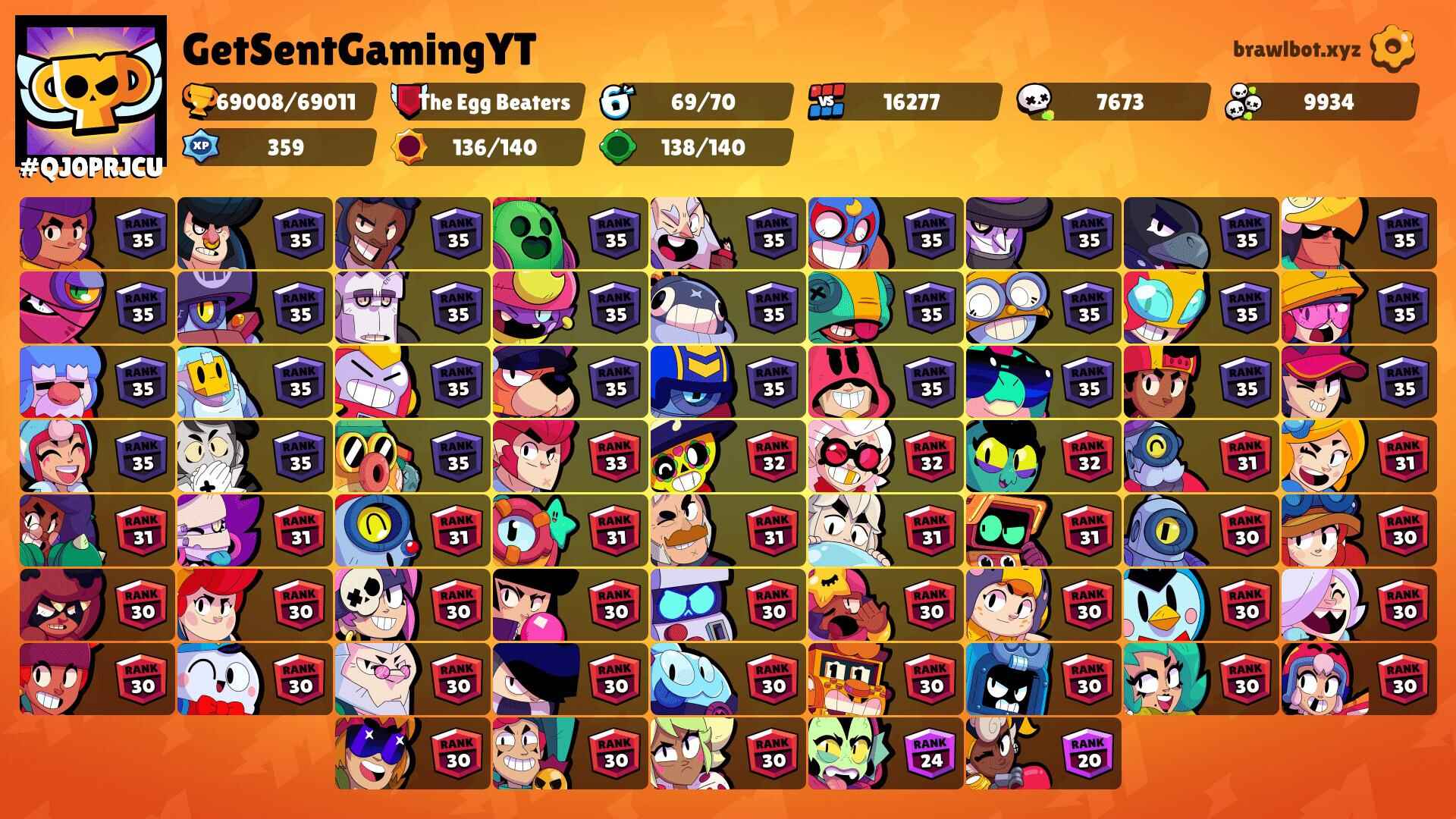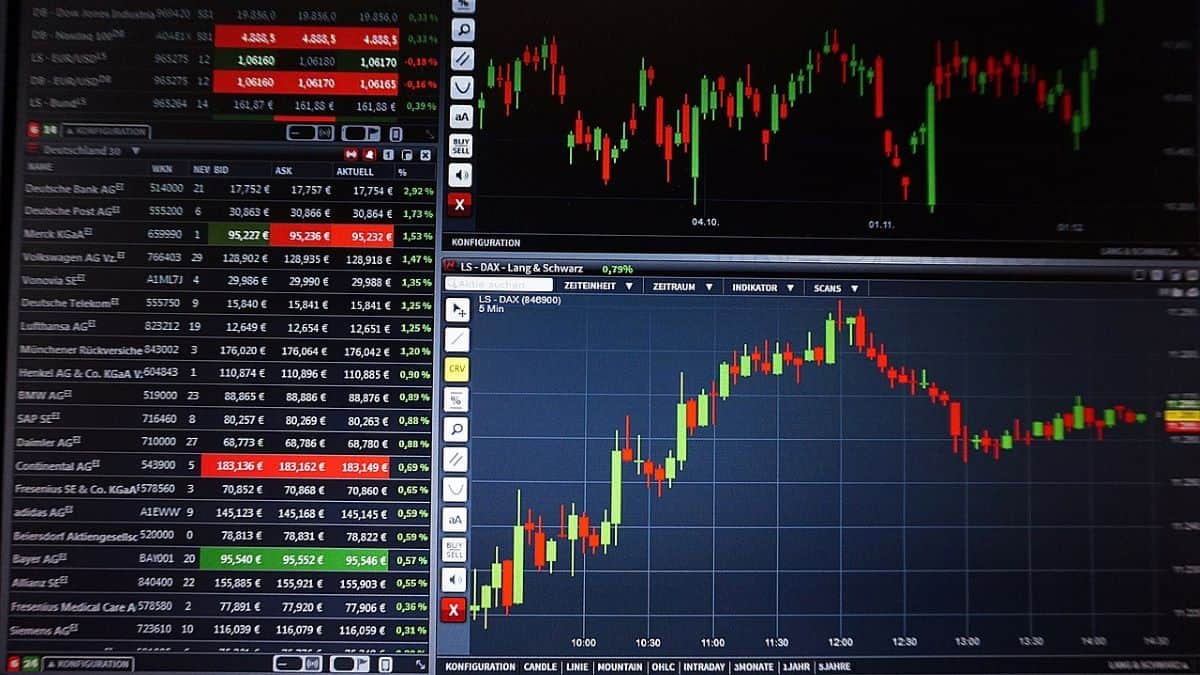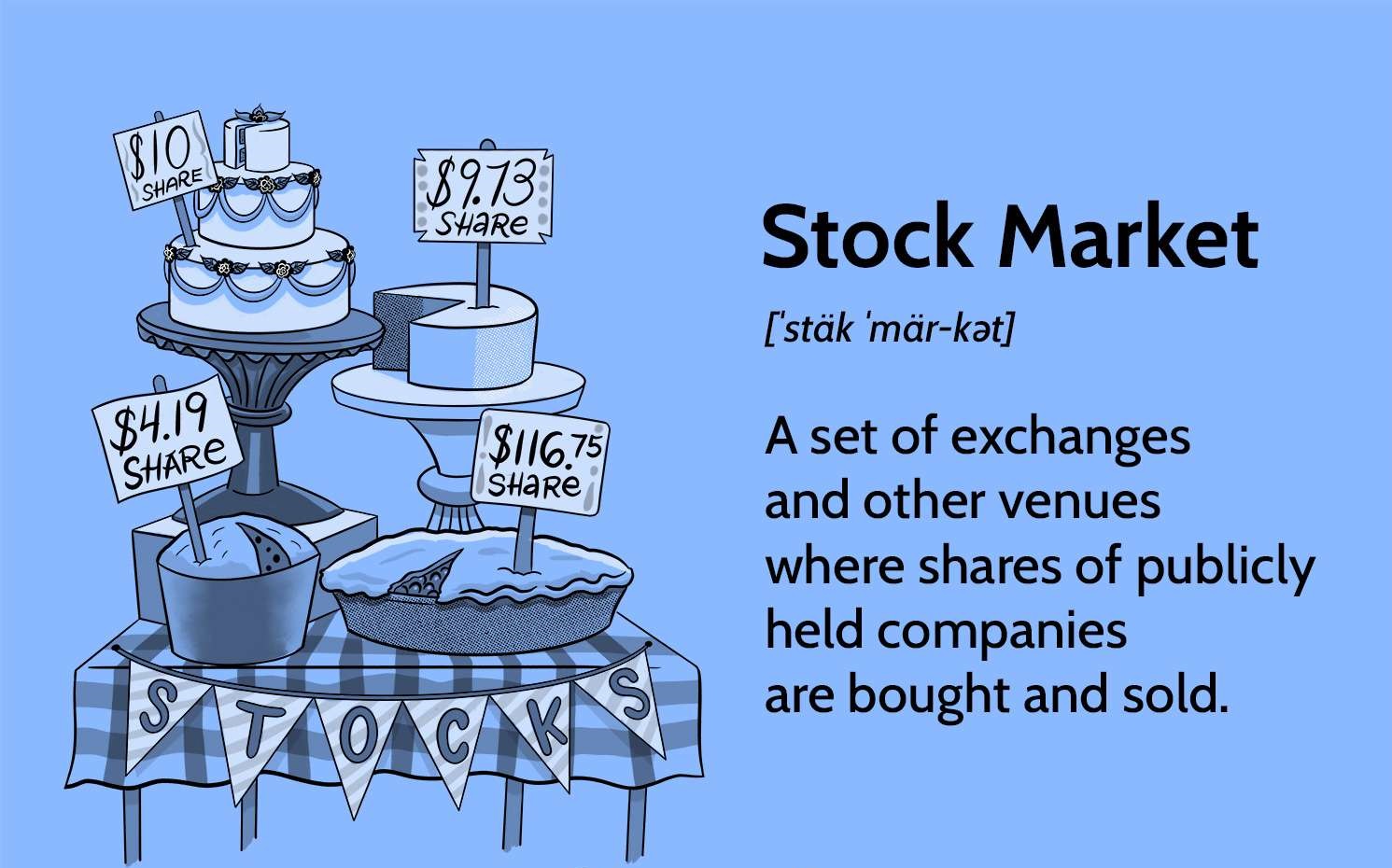Introduction
Welcome to the exciting world of online trading! With the advancement of technology, individuals now have the opportunity to participate in financial markets from the comfort of their own homes. Online trading has opened up a whole new world of investment possibilities, allowing anyone with an internet connection to buy and sell various financial instruments such as stocks, currencies, commodities, and more.
Trading online offers numerous advantages. It provides greater accessibility as you can trade anytime, anywhere, without being limited by geographical boundaries. Additionally, online trading platforms offer a wide range of tools and resources to help you make informed investment decisions. Whether you are a beginner or an experienced trader, online trading provides a level playing field for all participants.
However, it’s important to note that online trading can be complex and risky. Without proper knowledge and a structured approach, it can be easy to make costly mistakes. That’s why it’s crucial to educate yourself and understand the fundamentals of trading before you start.
In this guide, we will walk you through the essential steps of trading online and provide you with practical tips to help you get started. From finding the right trading platform to placing your first trade, we’ve got you covered. By the end of this article, you will have a solid foundation to begin your online trading journey with confidence.
Finding the Right Online Trading Platform
When it comes to online trading, choosing the right trading platform is paramount. The platform you select will serve as your gateway to the financial markets, so it’s crucial to find one that meets your trading needs. Here are some key factors to consider when finding the right online trading platform:
- Regulation: Ensure that the trading platform you choose is regulated by a trusted financial authority. Regulation provides a level of security and ensures that the platform adheres to certain rules and guidelines to protect traders’ interests.
- Trading Instruments: Consider the range of trading instruments offered by the platform. You may want to trade stocks, currencies, commodities, or cryptocurrencies. Make sure the platform provides access to the asset classes you are interested in.
- User-Friendly Interface: A user-friendly and intuitive interface is essential, especially for beginners. Look for a platform that is easy to navigate, with clear and concise charts, tools, and order placement functionalities.
- Educational Resources: Trading platforms that provide educational resources can be highly beneficial, especially for novice traders. Look for platforms that offer tutorials, webinars, and educational materials to help you enhance your trading skills and knowledge.
- Technical Analysis Tools: Analyzing market trends and patterns is crucial in trading. Ensure that the trading platform provides a wide range of technical analysis tools such as indicators, charting features, and drawing tools to help you make informed trading decisions.
- Execution Speed and Reliability: Fast trade execution and reliable platform performance are vital for successful trading. Look for platforms that have a reputation for quick order execution and minimal downtime.
- Customer Support: Consider the level of customer support provided by the trading platform. Look for platforms that offer responsive customer service, available through various channels such as live chat, email, or phone.
Take the time to research and compare different online trading platforms. Consider reading reviews and feedback from other traders to get an idea of their experiences with different platforms. Demo accounts can also be a great way to test out a platform’s features and functionality before committing real money.
Remember, finding the right trading platform is essential for your trading success. So, prioritize the factors mentioned above and choose a platform that aligns with your trading goals and preferences.
Setting up Your Trading Account
Once you have found the right online trading platform, the next step is to set up your trading account. Setting up your account is a straightforward process, and here are the key steps involved:
1. Registration: Visit the website of your chosen trading platform and locate the “Sign Up” or “Register” button. Click on it and provide the required information, including your name, email address, and password. Some platforms may also ask for additional personal details for verification purposes.
2. Account Verification: After filling in your details, you may be required to verify your account. This is usually done by providing identification documents such as a passport or driver’s license. Follow the platform’s instructions to upload the necessary documents and complete the verification process.
3. Funding Your Account: Once your account is verified, you will need to deposit funds into your trading account. Most platforms offer various funding options such as bank transfers, credit/debit cards, or e-wallets. Choose a method that is convenient for you, and follow the instructions provided by the platform to transfer the funds.
4. Account Currency: Pay attention to the account currency offered by the platform. Select a currency that aligns with your trading preferences and avoids unnecessary currency conversion fees.
5. Terms and Conditions: Before finalizing the registration process, make sure to review and understand the platform’s terms and conditions. Familiarize yourself with the trading rules, fees, and any other important information provided by the platform.
6. Security Measures: Take steps to protect your trading account. Set a strong, unique password and enable two-factor authentication if the platform offers it. Regularly monitor your account for any suspicious activity and report any concerns to the platform’s customer support.
It’s important to note that some platforms may offer different types of trading accounts, such as demo accounts or different account tiers with varying features and benefits. Consider your trading experience level, risk tolerance, and trading goals when selecting the account type that suits you best.
Once your trading account is set up, you will have access to the trading platform’s features, tools, and trading instruments. However, before you dive into trading, it’s crucial to understand the basics of trading and develop a solid trading strategy, which we will explore in the following sections.
Understanding the Basics of Trading
Before you start trading online, it’s essential to have a clear understanding of the basic concepts and principles of trading. Here are some key elements to grasp:
1. Types of Financial Instruments: Familiarize yourself with the different types of financial instruments available for trading, such as stocks, currencies, commodities, and indices. Each instrument has its unique characteristics and factors that influence its value.
2. Market Orders vs. Limit Orders: Understand the difference between market orders and limit orders. A market order is executed instantly at the current market price, while a limit order allows you to set a specific price at which you want to buy or sell an asset. Limit orders offer more control over trade execution but may not be immediately executed if the specified price is not reached.
3. Bid and Ask Price: The bid price represents the highest price that a buyer is willing to pay for an asset, while the ask price is the lowest price at which a seller is willing to sell. The difference between the bid and ask price is known as the spread.
4. Trading Leverage: Leverage allows you to amplify your trading position by trading with borrowed funds from your broker. While leverage can magnify your profits, it also carries higher risks. Understand the concept of leverage and use it wisely to manage your risk.
5. Fundamental vs. Technical Analysis: There are two primary methods of analyzing the markets: fundamental analysis and technical analysis. Fundamental analysis involves studying the economic factors, company financials, and news events that can impact the value of an asset. Technical analysis, on the other hand, focuses on studying price patterns, trends, and indicators to predict future price movements.
6. Risk Management: Effective risk management is crucial in trading. Set a risk tolerance level for each trade and use stop-loss orders to limit potential losses. Diversify your portfolio and avoid risking too much of your capital on a single trade.
7. Emotional Control: Emotions can significantly impact your trading decisions. Learn to control your emotions, such as fear and greed, and stick to your trading plan. Avoid making impulsive decisions based on short-term market fluctuations.
By understanding these basic concepts, you will have a solid foundation to build your trading knowledge upon. It’s important to continue educating yourself and staying updated with market news and trends. In the next sections, we will explore how to research and analyze the market effectively and choose the right trading strategy.
Researching and Analyzing the Market
Researching and analyzing the market is a crucial step in successful online trading. It involves gathering information, evaluating trends, and making informed decisions based on your findings. Here are some key steps to help you research and analyze the market effectively:
1. Stay Informed: Keep up-to-date with the latest financial news, economic reports, and market trends. Subscribe to reliable news sources, financial websites, and industry publications to stay informed about the factors that may impact the markets.
2. Fundamental Analysis: Conduct fundamental analysis by examining the underlying factors that can influence the value of an asset. Consider economic indicators, company earnings reports, political events, and industry trends that may affect the value of the assets you are trading.
3. Technical Analysis: Utilize technical analysis tools and techniques to study price patterns, trends, and market charts. Look for support and resistance levels, chart patterns, and indicators to identify potential entry and exit points for your trades.
4. Use Trading Indicators: Explore various trading indicators such as moving averages, oscillators, and trend lines to gain insights into market trends and potential price movements. Experiment with different indicators to find the ones that align with your trading strategy.
5. Understand Market Sentiment: Pay attention to market sentiment, which refers to the overall attitude and emotion of traders towards a particular market or asset. Sentiment analysis can provide valuable insights into market trends and potential reversals.
6. Analyze Market Volatility: Consider market volatility, which measures the magnitude of price fluctuations. High volatility can present opportunities for significant profits but also carries higher risks. Adjust your trading strategy based on the volatility of the markets you are trading.
7. Utilize Economic Calendars: Utilize economic calendars to stay aware of upcoming events, such as central bank meetings, economic releases, and corporate earnings announcements. These events can have a significant impact on market volatility and provide trading opportunities.
8. Monitor Market Correlations: Keep an eye on the correlations between different assets and markets. Understanding how different assets move in relation to each other can help you diversify your portfolio and manage risk effectively.
9. Develop a Trading Plan: Create a structured trading plan based on your research and analysis. Define your trading goals, risk tolerance, entry and exit strategies, and money management rules. Stick to your plan and avoid making impulsive trading decisions based on emotions.
Remember, research and analysis are ongoing processes. Continuously monitor the markets, review your trading strategies, and adapt as needed. With a solid understanding of market research and analysis, you will be better equipped to make informed trading decisions.
Choosing the Right Trading Strategy
Having a well-defined trading strategy is crucial for consistent success in online trading. Your trading strategy serves as a roadmap that guides your decision-making process and helps you navigate the dynamic markets. Here are some factors to consider when choosing the right trading strategy:
1. Timeframe: Consider your preferred trading timeframe – are you more inclined towards short-term trading (day trading or scalping) or long-term investing? Different strategies are better suited for different timeframes, so align your strategy with your trading style and time commitment.
2. Risk Tolerance: Evaluate your risk tolerance and choose a strategy that matches your comfort level. Some strategies, like trend trading, may involve holding positions for longer periods and enduring potential drawdowns, while others, like swing trading or momentum trading, have a shorter holding period and may offer quicker returns.
3. Support and Resistance: Determine if you want to base your strategy on support and resistance levels. Support levels are price points where buying pressure is expected to outweigh selling pressure, while resistance levels are price points where selling pressure is expected to outweigh buying pressure. Utilizing these levels can help you identify potential entry and exit points.
4. Technical Indicators: Decide if you want to incorporate technical indicators in your strategy. Indicators such as moving averages, MACD, RSI, and Bollinger Bands can provide insights into market trends and potential entry or exit signals.
5. News and Fundamentals: Determine if you want to incorporate news and fundamental analysis into your strategy. Some traders prefer to focus on market news and economic events to make trading decisions, while others rely solely on technical analysis. Combining both approaches can provide a comprehensive view of the markets.
6. Backtesting and Paper Trading: Before committing real capital, consider backtesting your strategy on historical data or implementing it in a paper trading environment. This will help you assess the performance of your strategy and make any necessary adjustments before risking actual money.
7. Monitor and Adapt: Continuously monitor the performance of your trading strategy and be open to making adjustments as needed. The markets evolve, and what might have worked in the past may not be effective in the future. Stay flexible and willing to adapt your strategy based on changing market conditions.
8. Continuous Learning: Remember that trading is a journey of continuous learning. Stay updated with market trends, explore new strategies, and learn from both your successes and failures. This will help you refine your trading approach over time.
Ultimately, the right trading strategy will depend on your individual preferences, risk tolerance, and trading goals. Experiment with different strategies, keep a trading journal, and evaluate the results to find the approach that works best for you.
Managing Your Risks
Effective risk management is crucial in online trading to protect your capital and ensure long-term success. By implementing risk management strategies, you can reduce the impact of potential losses and preserve your trading account. Here are some key principles to help you manage your risks:
1. Set Risk Parameters: Define your risk tolerance and determine the maximum amount you are willing to risk on each trade. This can be expressed as a percentage of your trading capital or a specific dollar amount.
2. Use Stop-Loss Orders: Utilize stop-loss orders to limit potential losses on your trades. A stop-loss order is an instruction to sell or buy an asset when it reaches a specified price level. This helps you exit a losing trade before the losses become significant.
3. Diversify Your Portfolio: Avoid putting all your eggs in one basket by diversifying your trading portfolio. By investing in a variety of assets or markets, you spread out your risk and reduce the impact of individual losses.
4. Position Sizing: Determine the appropriate position size for each trade based on your risk tolerance. This involves calculating the number of shares or contract size to trade while considering your stop-loss level and the total capital at risk.
5. Avoid Overleveraging: Be cautious with leverage. While leverage can amplify potential profits, it also magnifies losses. Avoid excessive leverage that could wipe out your trading account in a single trade.
6. Regularly Review and Adjust: Continuously review and assess your trading performance. Identify which trades are working well and which ones are not. Consider adjusting your risk parameters, stop-loss levels, or overall trading strategy accordingly.
7. Emotion Control: Emotions can cloud judgment and lead to impulsive trading decisions. Learn to control your emotions, such as fear and greed, and stick to your predefined risk management rules and trading plan.
8. Stay Informed: Keep up-to-date with market news and events that can impact your trades. Sudden market shifts or unexpected news can increase volatility and risk. Being informed allows you to make informed decisions.
9. Practice Patience: Avoid chasing quick profits or trying to recoup losses hastily. Be patient in waiting for favorable trading opportunities that align with your strategy and risk parameters.
Remember that risk is an inherent part of trading, and there will always be some level of uncertainty. By implementing effective risk management strategies, you can significantly reduce potential losses and increase your chances of long-term profitability.
Placing Your First Trade
Placing your first trade can be an exciting and nerve-wracking experience. It’s the moment when all the research and preparation come together. Here are the steps to help you successfully execute your first trade:
1. Choose Your Trading Instrument: Select the financial instrument you want to trade. This could be stocks, currencies, commodities, or any other asset available on your chosen trading platform.
2. Analyze the Market: Conduct thorough research and analysis of the market for your chosen instrument. Consider both fundamental and technical factors to identify potential entry and exit points for your trade.
3. Determine Your Entry and Exit Points: Based on your analysis, decide at which price point you want to enter the trade and set a clear objective for when you plan to exit. This could be a specific profit target or the point at which you will cut your losses with a stop-loss order.
4. Calculate Position Size: Determine the appropriate position size for your trade based on your risk tolerance and the amount of capital you are willing to allocate to this trade. This calculation will help you determine the number of shares or contracts to trade.
5. Place the Trade: Log in to your trading account and navigate to the order placement section on the trading platform. Depending on your chosen platform, you will have the option to place a market order or a limit order. Enter the necessary details such as the stock symbol, quantity, order type, and price if applicable. Double-check the information and confirm your trade.
6. Set Stop-Loss and Take-Profit Levels: If you haven’t already, set your stop-loss and take-profit levels. The stop-loss order will automatically close your position if the price moves against you by a specified amount, limiting your potential losses. The take-profit order will close your position when the price reaches your desired profit level.
7. Monitor Your Trade: Once your trade is executed, it’s important to monitor it closely. Keep an eye on the market movements, news releases, and any factors that can impact your trade. Be prepared to make adjustments to your stop-loss or take-profit levels if necessary.
8. Psychological Preparation: Emotions can play a significant role in trading. Be prepared for various outcomes and maintain a disciplined mindset. Stick to your trading plan and avoid making impulsive decisions based on short-term market fluctuations.
Placing your first trade is an important milestone in your trading journey. Remember that practice and experience will help you refine your trading skills over time. Continue to learn and adapt as you gain more experience in the markets.
Monitoring Your Trades and Making Adjustments
Monitoring your trades and making necessary adjustments is a crucial aspect of successful online trading. By actively managing your trades, you can maximize potential profits and minimize losses. Here are some key steps to effectively monitor your trades and make adjustments when needed:
1. Regularly Check Market Conditions: Stay updated with market news and developments that can impact your trades. Monitor economic indicators, company announcements, and other factors that may affect the value of the assets you are trading.
2. Set Realistic Expectations: Have realistic expectations for your trades. Understand that not every trade will be a winner, and losses are a part of trading. Avoid chasing unrealistic targets or making impulsive decisions based on short-term market movements.
3. Stick to Your Trading Plan: Follow your trading plan and strategies. Consistency is key in trading. Avoid deviating from your initial plan due to fear, greed, or emotional impulses. Trust your analysis and the criteria you use for entering and exiting trades.
4. Adjust Stop-Loss and Take-Profit Levels: Continuously assess the risk-reward ratio of your trades. If the market conditions or price action change, consider adjusting your stop-loss and take-profit levels accordingly. This can help you lock in profits or protect against potential losses.
5. Trail Stop-Loss Orders: As the price moves in your favor, consider implementing trailing stop-loss orders. A trailing stop allows you to adjust your stop-loss level as the price moves in your favor, locking in profits while giving the trade room to continue in your desired direction.
6. Analyze Trade Performance: Regularly review and analyze the performance of your trades. Assess the factors that contributed to successful trades and those that resulted in losses. Learn from your past trades to improve your trading strategies and decision-making process.
7. Avoid Overtrading: Be mindful of overtrading, which can lead to impulsive and emotional decisions. Stick to high-quality trade setups based on your analysis and strategy. Avoid entering trades just to be active in the market. Quality over quantity is key.
8. Take Profits When Needed: Consider taking partial profits when the price reaches your predetermined target. This allows you to lock in profits while giving the remaining portion of the trade the potential to continue moving in your favor.
9. Trust Your Analysis: Have confidence in your analysis and the trading strategies you have developed. Avoid second-guessing yourself or making hasty decisions based on market noise or external opinions. Trust in your abilities and follow your own judgment.
Remember, monitoring trades and making adjustments is an ongoing process. Stay updated with market conditions, stay disciplined, and be proactive in managing your trades. With experience and continuous learning, you will become more effective in monitoring and adjusting your trades for better trading outcomes.
Reviewing Your Trading Performance
Regularly reviewing your trading performance is essential for improvement and long-term success in online trading. By taking the time to analyze your trades and assess your performance, you can identify strengths, weaknesses, and areas for improvement. Here are some key steps to effectively review your trading performance:
1. Keep a Trading Journal: Maintain a detailed record of your trades in a trading journal. Include information such as entry and exit points, reasons for entering the trade, trade duration, and any observations or lessons from each trade. This journal will serve as a valuable resource for analyzing your performance over time.
2. Analyze Trade Outcomes: Evaluate the results of your trades. Review your winning trades to identify what went well and why. Similarly, examine your losing trades to understand what went wrong and how you could have improved your approach. Look for patterns or recurring mistakes that need to be addressed.
3. Assess Risk-Reward Ratio: Evaluate your risk-reward ratio for each trade. Ensure that your potential reward justifies the risk you are taking. If you find that your trades consistently have an unfavorable risk-reward ratio, consider adjusting your trading strategy to improve this aspect.
4. Analyze Emotional Decision-Making: Reflect on any emotional biases or impulsive decisions you may have made during your trades. Assess how your emotions influenced your decision-making process and determine how to better manage them in future trades.
5. Track Your Trading Goals: Regularly assess how well you are progressing towards your trading goals. Review whether your trading strategies align with your goals and whether adjustments are necessary. Refine your objectives and set new goals as you progress in your trading journey.
6. Identify Patterns and Trends: Look for patterns and trends in your trading performance. Determine if there are specific market conditions, times of the day, or trading setups where you tend to perform exceptionally well or struggle. Adjust your trading plan accordingly to capitalize on your strengths and minimize weaknesses.
7. Seek Feedback from Other Traders: Engage with other traders or join trading communities where you can seek feedback and learn from experienced traders. They may provide valuable insights and perspectives that can help you improve your trading performance.
8. Continual Learning and Adaptation: Embrace a mindset of continuous learning and adaptation. Stay updated with market trends, trading strategies, and new developments in the industry. Attend webinars, read trading books, and enroll in courses to further enhance your trading knowledge and skills.
9. Make Adjustments and Iterate: Based on your analysis, make necessary adjustments to your trading strategies, risk management techniques, or trading plan. Implement these changes gradually and monitor their impact on your trading performance. Iterate and refine your approach as needed.
Remember, reviewing your trading performance is not about dwelling on past mistakes or missed opportunities. It’s about learning, improving, and adapting for future trades. Use your review process as a tool to become a more disciplined, informed, and successful trader.
Continuously Learning and Improving
In the ever-evolving world of online trading, continuous learning and improvement are vital for staying ahead of the curve. As a trader, it’s crucial to embrace a mindset of growth and seek opportunities to enhance your knowledge, skills, and strategies. Here are some key ways to continuously learn and improve as a trader:
1. Stay Updated with Market News: Keep yourself updated with the latest market news and trends. Subscribe to reliable financial news sources, follow influential traders and analysts on social media, and pay attention to economic events that may impact the markets. Staying informed allows you to make more informed trading decisions.
2. Read Trading Books and Publications: Expand your trading knowledge by reading books, articles, and publications written by reputable traders and industry experts. Learn about different trading strategies, risk management techniques, and psychological aspects of trading. Continuous reading will provide you with new insights and perspectives to apply to your own trading approach.
3. Attend Webinars and Workshops: Attend webinars and workshops conducted by experienced traders or financial institutions. These events often cover various trading topics, including technical analysis, fundamental analysis, risk management, and trading psychology. Take advantage of these learning opportunities to deepen your understanding and gain practical insights.
4. Join Trading Communities: Engage with other traders in trading communities, forums, or social media groups. This allows you to connect with like-minded individuals, share trading ideas, seek advice, and learn from the experiences of others. Trading communities provide a valuable support network and a platform for knowledge exchange.
5. Practice with Demo Accounts: Use demo accounts provided by trading platforms to practice and refine your trading strategies. Demo accounts allow you to trade with virtual money, simulating real trading conditions. This provides a risk-free environment to experiment with new techniques and understand how different market scenarios may affect your trading performance.
6. Analyze Your Trades: Continuously analyze your trades and assess your performance. Keep a trading journal that records your trades, observations, and lessons learned. Regularly review your trading journal to identify areas for improvement, patterns in your trading behavior, and recurring mistakes. Use this information to make adjustments and refine your trading strategies.
7. Take Advantage of Technology: Explore and utilize advanced trading tools and technology to enhance your trading capabilities. Learn how to use trading platforms, charting software, and analysis tools effectively. Leverage the power of automation, artificial intelligence, and machine learning algorithms to spot opportunities and streamline your trading process.
8. Learn from Mistakes: Embrace your mistakes as valuable learning opportunities. Analyze your losing trades and identify the factors that led to the losses. Reflect on your decision-making process, emotional biases, and areas where you can improve. By learning from your mistakes, you can refine your strategies and avoid repeating the same errors in the future.
9. Adapt to Changing Markets: Markets are dynamic and constantly evolving. Stay adaptable and flexible in your approach. Continuously assess market trends, changing volatility, and emerging opportunities. Be open to adjusting your strategies or exploring new trading approaches that align with current market conditions.
By committing to a mindset of continuous improvement, you can fuel your growth as a trader. Embrace lifelong learning, stay curious, and seek out new knowledge and experiences. Remember that trading is a journey, and the more you invest in learning and improving, the greater your chances of achieving trading success.

























